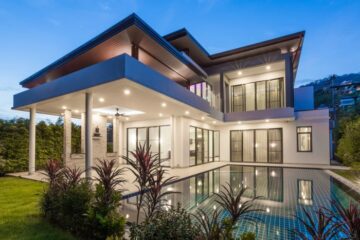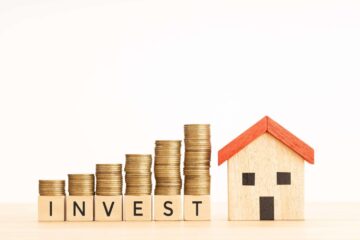Running a successful summer camp is a rewarding endeavor, but it also requires a thoughtful and strategic approach to ensure longevity. With the right business plan, you can create a camp that not only brings joy to campers but also thrives year after year. To build a summer camp that stands the test of time, you’ll need a Sustainable Camp Business Plan that balances financial viability with environmental responsibility and long-term growth.
In this article, we’ll dive into the key elements of crafting a sustainable business plan for your camp and explore how you can integrate both financial and ecological sustainability into your operations.
1. Define Your Mission with Sustainability in Mind
Every great camp starts with a strong mission. This mission is the backbone of your business, guiding your decisions and setting the tone for your operations. When building a sustainable camp business plan, your mission should emphasize not only the experiences you want to provide for your campers but also how you plan to run your camp sustainably—both financially and environmentally.
Ask yourself: What do you want campers to gain from your camp? How will you incorporate eco-friendly practices into your daily operations? Maybe your camp’s mission is to connect children with nature, teaching them environmental responsibility through outdoor activities. Or perhaps you focus on reducing waste and energy use at the camp. Aligning your mission with sustainability can help differentiate your camp from competitors and attract families that share these values.
2. Conduct Market Research for Long-Term Success
Market research is a crucial step in building any business, and it’s particularly important for creating a sustainable camp. You need to understand your audience, the competition, and the demand for different types of camps. Are families in your region looking for eco-conscious camps? Are there gaps in the market for a particular type of camp experience?
Conduct surveys, talk to local parents, and research other camps in your area. By understanding the needs and desires of your potential campers, you can design a camp that meets demand and ensures consistent enrollment. For example, if you find that many families are looking for camps with sustainability-focused programming, you can tailor your camp to offer eco-friendly activities like nature hikes, gardening, or wildlife conservation projects.
3. Develop a Detailed Financial Plan
A sustainable camp business plan must include a thorough financial analysis. You’ll need to outline all startup costs, ongoing expenses, and projected revenue. Having a clear financial roadmap will ensure that your camp remains financially viable while maintaining its commitment to sustainability.
Here are some key components to include in your financial plan:
Startup Costs: These can include land or facility rentals, permits, licenses, marketing, staff hiring, and equipment purchases.
Operational Costs: Ongoing expenses such as salaries, utilities, insurance, food, and maintenance.
Revenue Projections: Estimate how much income you expect to generate through camper fees, sponsorships, grants, and partnerships.
To ensure long-term financial sustainability, consider diversifying your revenue streams. For example, you can offer off-season events, team-building programs for corporate groups, or family retreats that help generate income beyond the summer months. Being financially flexible will help your camp weather economic fluctuations and continue to grow over time.
4. Prioritize Eco-Friendly Practices
Incorporating environmentally sustainable practices into your camp’s operations is not only good for the planet but can also save you money in the long run. Plus, it’s a growing trend that appeals to today’s eco-conscious families.
Here are some ways you can integrate eco-friendly initiatives into your camp:
Waste Reduction: Implement recycling and composting programs, and encourage campers to reduce waste by bringing reusable water bottles, utensils, and containers.
Energy Efficiency: Utilize solar panels, energy-efficient appliances, and natural lighting in your camp facilities. Encourage campers to spend more time outdoors, which reduces the need for energy-consuming indoor activities.
Water Conservation: Use water-saving fixtures, such as low-flow toilets and faucets, and teach campers about the importance of conserving water in their daily lives.
Sustainable Food Choices: Source food from local farms, offer organic options, and reduce food waste by encouraging portion control and composting leftovers.
By adopting these practices, you can reduce your camp’s environmental footprint while teaching campers valuable lessons about sustainability.
5. Build a Strong Team
Your staff plays a crucial role in the success of your camp. To build a camp that is both financially and environmentally sustainable, you need to hire individuals who are passionate about your mission and equipped with the skills to deliver a high-quality camp experience.
When hiring, look for staff members who not only have experience working with children but also share your commitment to sustainability. Your team should be able to teach campers about eco-friendly practices, lead outdoor activities that foster a connection with nature, and help run a camp that aligns with your values.
In addition to hiring the right people, invest in staff training. Before the camp season begins, organize workshops that cover your camp’s sustainable operations, safety protocols, and camper engagement strategies. A well-trained and motivated team will ensure that your camp runs smoothly and sustainably.
6. Marketing Your Sustainable Camp
Marketing is key to attracting campers and keeping your camp financially sustainable. Highlight your commitment to sustainability in all of your marketing efforts—both online and offline. This can help you stand out from other camps and appeal to families who prioritize eco-friendly activities for their children.
Create a visually appealing, easy-to-navigate website that clearly outlines your camp’s sustainability initiatives. Share photos and videos of campers participating in eco-conscious activities, and use social media to engage with potential campers and parents.
In addition to promoting sustainability, focus on the unique experiences your camp offers. Do you provide team-building activities that foster leadership and cooperation? Are your programs designed to immerse kids in nature and inspire environmental stewardship? Make sure these selling points are clear in your marketing materials.
7. Evaluate and Adapt
A sustainable camp business plan is not static—it should evolve as your camp grows and the market changes. Regularly evaluate your camp’s performance, gather feedback from campers and parents, and be willing to adapt your business model as needed.
Use surveys and open discussions to assess how well your camp is meeting its goals, both financially and environmentally. Are campers enjoying the activities? Are you operating within your budget? Are there areas where you can improve your sustainability efforts?
By staying flexible and open to change, you can ensure that your camp remains relevant, profitable, and aligned with your values for years to come.
Conclusion
Creating a sustainable business plan for your summer camp is about balancing financial viability with environmental responsibility. By clearly defining your mission, conducting thorough market research, and implementing eco-friendly practices, you can build a camp that appeals to modern families and stands the test of time. With a well-rounded approach that includes strong financial planning, team-building, and marketing strategies, your camp can flourish while making a positive impact on both campers and the environment.
FAQs
1. What is a sustainable camp business plan?
A sustainable camp business plan is a strategic roadmap that focuses on long-term financial viability and environmental responsibility. It involves balancing startup and operational costs with eco-friendly practices to ensure the camp thrives over time.
2. Why is market research important for a sustainable camp?
Market research helps you understand the demand for your camp’s offerings, identify gaps in the market, and determine what families in your area are looking for. This information allows you to create a camp that meets the needs of your target audience while maintaining sustainability.
3. How can I incorporate eco-friendly practices into my camp?
You can implement recycling and composting programs, use energy-efficient appliances, conserve water, and source local or organic food. These practices not only reduce your camp’s environmental footprint but also teach campers about sustainability.
4. How do I make my camp financially sustainable?
To ensure financial sustainability, create a detailed financial plan that includes startup and operational costs, as well as diversified revenue streams. Offering off-season events, corporate team-building activities, or family retreats can help generate income throughout the year.
5. How can I market my camp’s sustainability efforts?
Promote your camp’s eco-friendly initiatives on your website, social media, and marketing materials. Highlight your commitment to sustainability and showcase activities that connect campers with nature. Engaging visuals and clear messaging can help attract eco-conscious families.
Keep an eye for more news & updates on Buzz Slash!




